Summary
Our goal is to provide standard test methods and critical data to the pipeline industry to improve safety and reliability. Of particular interest is the testing of high-strength pipeline steels, which could enable higher volume transport and reduce energy costs. However, characterizing the ductile fracture properties of these materials is difficult, limiting their use due to safety concerns. We are developing new methods to test these materials to enable pipeline designers to better predict fracture dynamics and make better informed material selections and lifecycle predictions.
Description
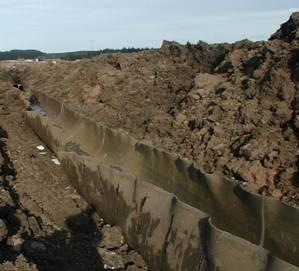
Running crack in a buried pipeline.
The U.S. operates more than 2.5M miles of natural gas, petroleum and hazardous liquid pipelines, crossing all 50 states and operated by more than 3,000 companies. Fluid hydrocarbon fossil fuels remain the world leading source of energy. The safest and most reliable means of transporting these fuels is by pipeline. All citizens are impacted by the safe transport of fuels, whether it is by direct energy consumption or indirectly by manufactured goods. Maintenance of and investment in this critical energy infrastructure ensures a safe and secure quality of life for all.
The pace of advanced manufacturing of steel and tubular goods have surpassed many of the current design code requirements, design methodologies and test methods to accurately characterize material and structural performance. While new design methodologies and assessment procedures are being widely adopted for specialized applications, the level of conservatism reduces the potential use and benefit of some of these advanced steel products.
The pipeline industry has adopted a “Zero Tolerance” policy for pipeline failures, benefiting the industry and consumers alike. This “Zero Tolerance” of pipeline failures is implemented in parallel with the need to use advanced steel products to their full potential.
Current Project – Ductile Running Failure
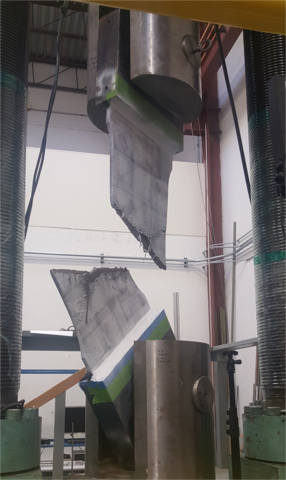
The development of high-toughness linepipe materials is reducing the relevance of current material test methods and their application to design. Current fracture mechanics models, plastic collapse schemes and test methods are inadequate to determine the crack arresting capacity of a particular steel alloy/linepipe component. Furthermore, relatively inexpensive tests that are quick to perform are simply not available to accurately assess the fracture behavior of today's high strength and high toughness linepipe steels.
The Department of Transportation’s Pipeline and Hazardous Materials Safety Administration (PHMSA) is the regulatory organization responsible for the safe transportation of energy and other hazardous materials that are essential to our daily lives. The agency establishes national policy, sets and enforces standards, educates, and funds research to prevent incidents. NIST has an interagency agreement with DOT-PHSMA to characterize modern high-strength and high-toughness steels for fracture propagation and arrest.
NIST has developed the research framework taking advantage of a multi-disciplinary approach to first understand the mechanics of the ductile running failures and then to systematically apply techniques to scale the structural performance to a laboratory scale test. This approach considers both the structural parameters influencing the ductile running failure as well as the material properties.
Ahead of every running ductile failure is a plastic process zone, where the pipe material is plastically deformed prior to the crack extending to it. This process zone changes the material properties to the extent that the capacity to absorb the running crack energy is diminished. The steel’s resistance to developing this process zone influences the condition of propagation or arrest.
Unfortunately, the material properties of the deformed material in the process zone aren’t known and predictions of crack arrest or propagation are based on original material properties. That is, the properties of the material as the pipe was manufactured.
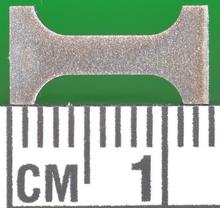
Our approach to this is to pre-strain a relevant plate of pipeline steel and then determine its properties with known strain histories. This data is used to inform a three-dimensional (3D) constitutive material model that accounts for strain history and therefore can be used in a structural finite element analysis (FEA) to predict structural response to known flaws propagating at a speed relevant to full scale conditions. Determining the through thickness properties of the steel is challenging and NIST has taken a standardized test method and miniaturized the specimen and determine the properties. Scaling test specimens presents significant challenges to ensure that the scaling has a known influence on the volume or bulk properties useful in the structural application.
Another significant challenge is with the variability of steel products in terms of chemistry and micro-structure. Manufacturers have wide latitude with respect to starting chemistry and final microstructure with the goal to produce a product that meets the minimum requirements specified in standards as economically and reliably as possible. An extension of this work is to develop the structure property relationships so that steels can be further classified by microstructure for the purposes of predicting arrest or propagation of a running ductile failure.
An informed constitutive material model is essential to the prediction of structural performance. However, full scale tests are very time consuming and very expensive to conduct with relatively little data output to validate the prediction. NIST is developing a medium scale test that can be conducted in a laboratory environment. The proposed test is done on a plate of pre-strained material (simulating the process zone) and will be conducted at high rates to properly simulate the crack driving forces relevant to full scale failure occurrences. The advantage is that the tests are relatively inexpensive to conduct and more variables associated with the test can be exercised to validate the structural model under different conditions and to parameterize the results; effectively separating structural influence from material property influence.
This is a complex, active and ongoing project – please contact the Project Leader for more information.
Current Project – Tensile Strain Capacity
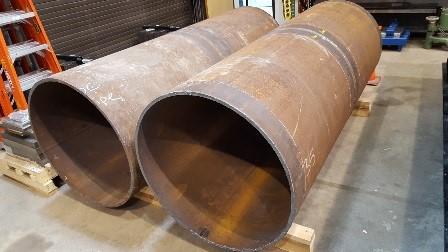
Strain-Based design is a widely accepted design methodology that takes advantage of the strain difference of the steel between its yield point and its ultimate tensile strength. The usefulness of this methodology requires knowing where on the stress-strain curve the pipeline is allowed to operate and how much margin exists for more stress or strain to occur without failure. Because pipelines are welded structures and because welded structures have flaws, the methodology must account for flaws and establish a flaw tolerance.
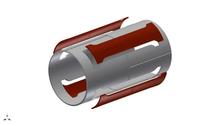
Structural models are used to predict performance of flawed welds but must be validated with tests. A common medium scale test conducted on a section of welded pipe is useful to validate the structural models. This test is a Curved Wide Plate (CWP) test where a section of welded pipe is prepared for testing by introducing a known flaw into either the weld or the adjacent heat affected zone (HAZ). The specimen is pulled and the growth of the flaw is evaluated. The CWP test when properly designed is the best laboratory scale test to replicate full scale conditions. It is also a significantly less expensive and time consuming test to conduct as compared to the full scale and a variety of variables can be exercised within the test matrix to valid the models with higher fidelity and reliability of the resultant data.
This test method is not standardized by a consensus standard organization and is typically designed and conducted to meet the needs of the project. NIST is actively involved with the pipeline industry as well as international research organizations to advance this method to a point that standardization is possible.
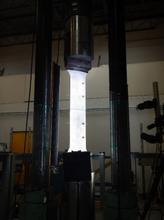
This project also involved a number of small-scale tests supporting the modelling effort to include strap tensile tests, round bar tensile tests, all weld metal tests and single-edge notched tension (SE(T)) tests. The SE(T) testing is also being used in an ongoing effort to standardize the test method. See below.
This current project is ending and is in the reporting stage - please contact the Project Leader for more information.
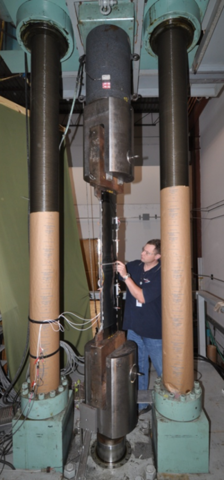
Current Project – SE(T) Standardization
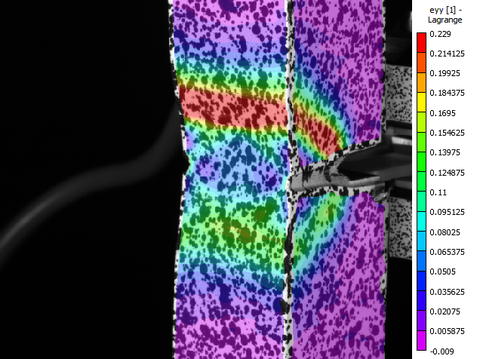
Fracture toughness is one of the most important parameters to evaluate the suitability of steel for use in pipeline structures. There are two important classifications of toughness, first is for initiation and the second is for propagation. Unfortunately scaling and geometry effects make it very difficult to determine and report either of these as an intrinsic material property.
The field of fracture mechanics is quite mature but is not without significant room for advancement. Test specimen geometries and loading conditions are designed specifically to have similar attributes to the full scale application. The small scale tests are conducted in carefully designed test matrices in controlled lab environments and with carefully calibrated instrumentation that is either impossible or impractical to do on a full scale structure. An example is the constraint similitude between full scale by way of CWP tests and single-edge notched tensile (SE(T) or SENT) tests.
The specimen geometry, test method and data analysis has not been standardized by a consensus standard organization until very recently. Upon careful review of the current standardized test method, the experts in fracture mechanics and the pipeline industry have agreed that the current standard is not prescriptive enough to accurately compare different steels for different applications. To ameliorate this, NIST is leading an effort within the American Society of Testing and Materials (ASTM) to standardize the test method.
Many years of using and combining industry recommended practices has given NIST a unique opportunity to apply and study a variety of alternative measurement and analysis techniques. For
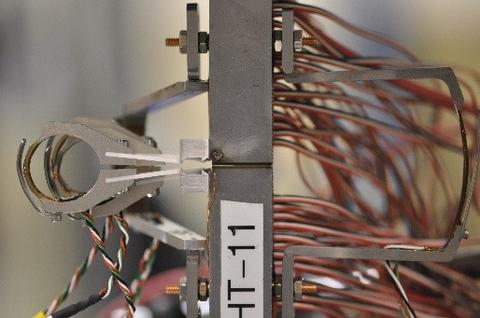
example, NIST was the first organization to employ two recommended practice methods to compare CTOD and J-integral based fracture parameters on the same specimens and under the same conditions. Additionally, NIST was the first to employ a second technique to evaluate J-integral on the same specimens and under the same conditions. Since the first publications of both of these firsts, NIST has advanced the techniques and continues to work in this area to support the standardization effort.
This is active and ongoing research - please contact the Project Leader for more information.
selected Publications
Lucon, E., Weeks, T.S., Gianetto, J.A., Tyson, W.R., Park, D.Y., Fracture Toughness Characterization of High-Pressure Pipe Girth Welds Using Single-Edge Notched Tension [SE(T)] Specimens. Materials Performance and Characterization. (2014).
Wang, Y.-Y., Honggang, Z., Liu, M., Tyson, W.R. Gianetto, J.A., Weeks, T.S., Richards, M.D., McColskey, J.D., Weld Design, Testing, and Assessment Procedures for High-strength Pipelines - Summary Report, in Final Report 277-S-01 to PHMSA, http://primis.phmsa.dot.gov/matrix/FilGet.rdm?fil=7324. Sept. 2011.
Wang, Y.-Y., Liu, M., Tyson, W.R. Gianetto, J.A., Quintana, M., Weeks, T.S., Weld Design, Testing, and Assessment Procedures for High-strength Pipelines - Background of Linepipe Specifications, in Final Report 277-T-01 to PHMSA, http://primis.phmsa.dot.gov/matrix/FilGet.rdm?fil=7325. Sept. 2011.
Gianetto, J.A., Tyson, W.R., Park, D.Y., Shen, G., Lucon,E., Weeks, T.S., Quintana, M.A., Rajan, V.B., Wang Y.-Y., Small Scale Tensile, Charpy V-Notch, and FractureToughness Tests, in Final Report 277-T-05 to PHMSA, http://primis.phmsa.dot.gov/matrix/FilGet.rdm?fil=7329. Sept. 2011.
Park, D.-Y., Tyson, W. R., Gianetto, J. A., Shen, G., Eagleson, R. S., Lucon, E., & Weeks, T. S. (2011a). Small-Scale Low-Constraint Fracture Toughness Test Results Final Report 277-T-06 to DOT/PHMSA, http://primis.phmsa.dot.gov/matrix/FilGet.rdm?fil=7330.
Park, D.-Y., Tyson, W. R., Gianetto, J. A., Shen, G., Eagleson, R. S., Lucon, E., & Weeks, T. S. (2011b). Small Scale Low Constraint Fracture Toughness Test Discussion and Analysis Final Report 277-T-07 to DOT/PHMSA, http://primis.phmsa.dot.gov/matrix/FilGet.rdm?fil=7331.
Weeks, T. S., McColskey, J.D. & Richards, M.D., (2011). Weld Design, Testing, and Assessment Procedures for High-strength Pipelines – Curved Wide Plate Tests in Final Report 277-T-09 to DOT/PHMSA, http://primis.phmsa.dot.gov/matrix/FilGet.rdm?fil=7333.
T. S. Weeks, J. D. McColskey, M. D. Richards, Y.Y. Wang, Z. Honggang, M. Liu, W. R. Tyson, J. Gianetto, M. A. Quintana, V. B. Rajan. (2011) Small Scale Fracture Toughness Testing of X100 Pipeline Girth Welds Summary Report 277-S-01" Final Report to Pipeline Research Council International, Inc., 3141 Fairview Park Drive Ste 525, Falls Church, VA, 22042, United States
Weeks, T.S., Sowards, J.W., Rentz, R.A., Read, D.T., Lucon, E. (2016) COMPARISON OF J-INTEGRAL MEASUREMENT METHODS ON CLAMPED SINGLE-EDGE NOTCHED TENSION SPECIMENS. Paper presented at the International Pipeline Conference, Calgary, Alberta, Canada.
Weeks, T.S., & Read D.T. (2015) Comparison of J-integral from single specimen SE(T) tests on API-5L X100 line pipe steel. Paper presented at the International Society of Offshore and Polar Engineering Conference, Kona, HI, USA.
Weeks, T. S., & Lucon, E. (2014). Direct Comparison of Single-Specimen Clamped SE(T) Test Methods on X100 Line Pipe Steel. Paper presented at the International Pipeline Conference, Calgary, Alberta, Canada.
Weeks, T.S. McColskey & Richards M.D (2014). Curved-Wide Plate Testing of X100 Girth Weld.
Paper presented at the International Pipeline Conference, Calgary, Alberta, Canada.
Weeks, T. S., McColskey, J. D., Read, D. T., & Richards, M. D. (2013). Fracture toughness instrumentation techniques for single-specimen clamped SE(T) tests on X100 line pipe steel: Experimental Setup. Paper presented at the Pipeline Technology Conference, Ostend, Belgium.
Sowards, J., Ramirez, A., Pereira, F., McColskey, J.D., Weeks, T.S., Fekete, J.R., Effect of Friction Stir Welding on Mechanical Properties and Fatigue Crack Propagation in API 5L X80 Pipeline Steel. in FABTECH AWS Conference (2012).
Wang, Y.-Y., Liu, M., Chen, Y., Weeks, T.S., Richards, M.D., McColskey, D., Horsley, D. Broad perspectives of girth weld tensile strain response. in International Pipeline Conference. 2010. Calgary, Alberta, Canada: ASME.
Richards, M.D., Weeks T.S., McColskey, J.D., Wang, B, Wang, Y.-Y. Fatigue Pre-Cracking Curved Wide Plates in Bending. in International Pipeline Conference. 2010. Calgary, Alberta, Canada: ASME.

